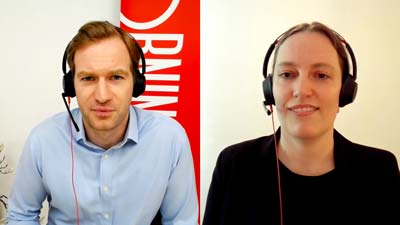
Odey Asset Management keeps seeing outflows from its fund range.
In the wake of the Financial Times' investigation into the behaviour of hedge fund boss Crispin Odey, Morningstar data shows more than £600 million has been pulled from the companies strategies.
This is an increase from the £277 million we reported being withdrawn in the first week following the FT's exposé on 8 June.
The outflow estimates are calculated using funds' reported size. If performance is also taken into account, the Odey/Brook fund range seems to have shrunk by over £800 million.
During the first week of the scandal, one fund completely closed while an additional four were gated. One of these – Odey Special Situations – reopened on July 11, while LF Brook Absolute Return opened again on July 21.
The latest funds to be suspended are Odey European Inc and OEI Mac, which are domiciled in the Cayman Islands, having been launched in 1992 and 1994 respectively.
Morningstar's calculations are in Pound Sterling, but it is worth noting some of Odey AM's strategies are in either Euro or Dollar funds.
So far, Brook European Focus has had the largest outflows, which have now hit £127 million since the FT's story broke. The fund is by far the largest in the Odey range and has remained open during the tumult engulfing Odey Asset Management and Odey personally.
That figure represents an additional £79 million of outflows since we last looked at the numbers on 16 June, surpassing the outflows of LF Brook Continental European, which until then had the largest withdrawals. £9 million is estimated to have been withdrawn last weekend alone. LF Brook Continental European has the second largest outflows, though, at £106 million. This means an additional £23 million has been withdrawn.
Three funds have seen their fund size more than halve over the period in question. Brook Global Emerging Markets, which now holds about £26 million, has seen a 68% reduction in fund size (a figure which accounts for both asset flows and performance).
At £54 million, it also happens to be one of three funds in the list that have seen outflows above £50 million, alongside LF Brook Absolute Return (£87 million) and Odey Opportunity (£67 million). In mid-June, these funds had only seen withdrawals between £5-12 million, showing an acceleration in investors removing their money.
The since-reopened Odey Special Situations has also seen outflows that surpass the fund size, with a total of £29 million in withdrawals and a fund size that has dropped by 58% since the story broke. Brook Developed Markets, which has been gated, now holds £59 million's worth of assets, but this is 66% lower than on June 8.
Why do Odey Fund Outflows Matter?
As we saw during the Woodford debacle, a crisis often triggers redemption requests for open-ended funds, leaving the firm with a number of choices: watch the money disappear out of the door, which involves selling assets to meet orders, or gating to stem outflows.
In Odey’s case, two funds have been wound up altogether. Odey Swan was closed within days of the FT’s story – but investors managed to withdraw £33 million in the interim. At the end of June, we learned LF Odey Portfolio will also be closed.
In the case of LF Brook Absolute Return, which was initially gated but reopened on 21 June, our data shows £68 million was withdrawn on Monday 24 July alone. On June 30, Odey Asset Management announced it was in "advanced talks" with Lancaster Investment Management and SW Mitchell Capital regarding the transfer of a number of funds. LF Brook Absolute Return is among them.
Earlier this week, my colleague James Gard wrote about the FCA's Consumer Duty, which came into effect this week. The new rules are designed to raise standards, improve service levels and value for money for customers.
In this context, he says "the best that could be said is the episode is not a great advert for founder asset management firms". What's more, the allegations against Crispin Odey highlight how non-financial conduct is still a thorny issue for the regulator (read UK editor Ollie Smith's commentary on the relationship between regulation and justice).
Our Methodology
Based on the publicly-available information, we looked at the 14 Odey funds that exist in the Morningstar database. We've narrowed our focus down to UCITS funds, excluding funds such as Odey European Inc and OEI Mac, which are domiciled in the Cayman Islands.
Using Morningstar Direct, we examined the daily estimated net flow at fund level, an aggregate figure of the multiple share classes within each fund. For the grand total, we have added together the daily net flows from June 8 to July 31.
Under European rules, funds typically report their full portfolios twice a year via annual and half-year reports. Holdings are also published in factsheets, typically as a Top 10 by size.
But further to that, Morningstar’s operations have comprehensive data on portfolios gathered from fund groups. They usually provide data on a month-by-month basis. The estimated net flow of assets takes fund size and performance of reported securities into account for the calculation.
Regardless, displaying full portfolios can differ in frequency and timeliness; some fund groups opt to release their complete holdings with a three-month lag. Odey Asset Management may be one of these companies.
Furthermore, hedge funds are more opaque by nature, use other asset classes like derivatives and currencies, and tend to have a higher trading frequency than open-ended funds. All these factors make the situation relatively difficult to examine.
Odey Asset Management declined to comment










:quality(80)/cloudfront-us-east-1.images.arcpublishing.com/morningstar/Q7DQFQYMEZD7HIR6KC5R42XEDI.png)

















